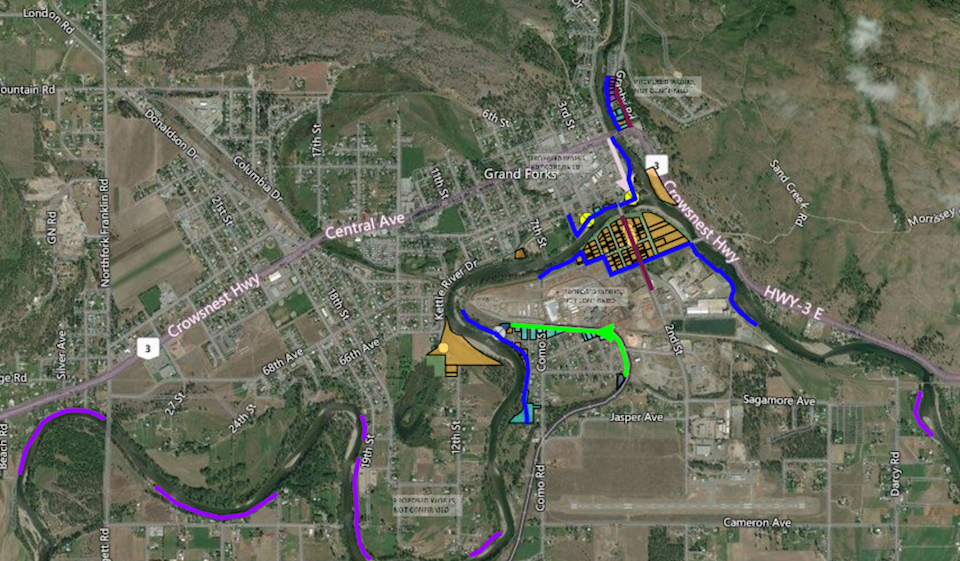Property owners who will receive buyouts for last year’s flood say the amount of money being dolled out by the provincial government isn’t enough.
Now residents are circulating a petition that will be presented to B.C. Minister of Public Safety Mike Farnworth by Boundary-Similkameen MLA Linda Larson to make their case for more compensation.
The petition argues that because “buyouts made at post-flood appraisal values will cause extreme hardship for those affected,” the provincial government should “consider buying properties at a pre-flood appraisal value.”
City estimates indicate a discrepancy of approximately $6.6 million between the pre- and post-flood values for all targeted properties combined, while the average loss for property owners subject to buyouts sits at $79,000 per land holding. The median loss sits roughly $10,000 lower at $68,400.
“There is no way that for someone who lives in a home right now and is debt-free, or even has a single mortgage, there’s no way that someone can go out and purchase a new home for less than $200,000 at this point,” said Jennifer Houghton, one of the residents circulating the petition.
“What we need right now is the rest of the community behind us,” Houghton added.
For its part, Grand Forks City Council voted Monday to raise the question of a pre-flood value for buyouts with Farnworth in a September meeting.
The unanimous vote to write letters to the appropriate ministries and arrange a meeting with Farnworth was spurred on by residents’ pressure.
“The concern of course within that community is not only them and their financial bottom line,” said Coun. Chris Moslin, who put the motion to his colleagues, “but also the setting of a precedent that would perhaps further protect homeowners facing a disaster.”
Houghton welcomed the motion of support, and noted the endorsement bolsters the case for pre-flood compensation.
“I think it’s really important that our local government speaks loudly and strongly about this and make it clear to the province in no uncertain terms that [this] is going to have a negative impact on the entire Grand Forks economy, when […] households are thrown into extreme hardship,” Houghton said.
Preparing for precedent
A driving argument for those advocating for a pre-flood rate is that the Grand Forks buyout process could be a precedent setter for the province. Where governments in other provinces like New Brunswick, Quebec and Manitoba have already grappled with buyout schemes following natural disasters, B.C. hasn’t had to yet.
“We need all hands on deck now and we need the support of not only the people in our town, but also people from across B.C.,” said Houghton.
Other communities in the province know this, too. According to a 2017 annual survey of local governments (including Grand Forks), the Climate Action Revenue Incentive Program found that “urban and overland flooding from extreme weather events is the most common impact on and concern of local governments.”
Threats of accelerating sea level rise already have the City of Surrey considering a plan for a “managed retreat” in the Crescent Beach neighbourhood. Approximately 400 homes in the low-lying area could be bought up over the next few decades; the solution is thought to be more economical than raising the beach’s current dike by 2.5 metres or building up the beach.
Under models released by the B.C. Ministry of Environment and Climate Change Strategy, flooding events are projected to become more frequent and more widespread over the next few decades, and not even the most economically powerful regions of the province are ready for it.
A July 2019 study indicates that what would have once been considered an extreme flood that only occurred every 500 years in the Fraser Valley will be up to five times as likely to hit by 2050, meaning that the region could see one every 100 years instead.
Such an event, the study indicates, could swamp parts of Chilliwack under more than five metres of water and hide most of Richmond and Delta under at least half a metre of brackish water.
Were such a disaster to hit the Fraser Valley now, the study says, losses are “estimated at $22.9 billion, including the agriculture, transportation, energy industries, and damage to ecosystem services.”
